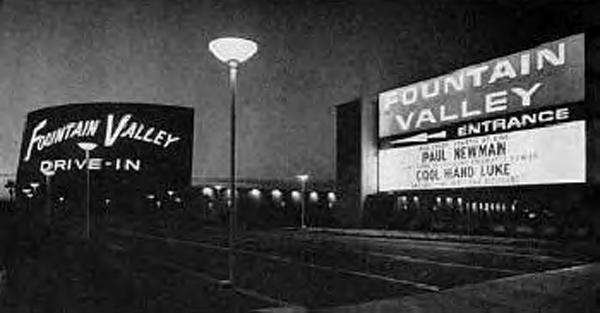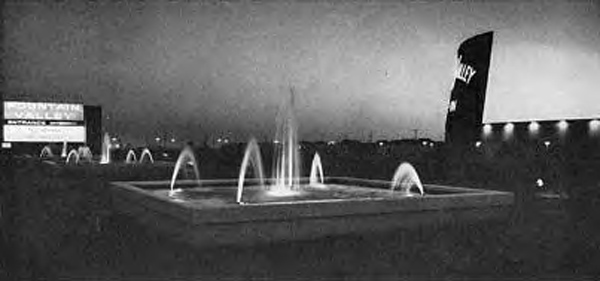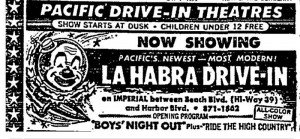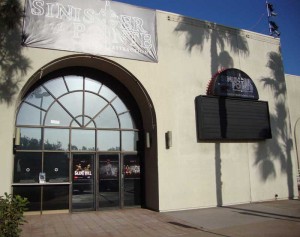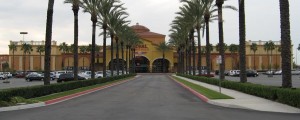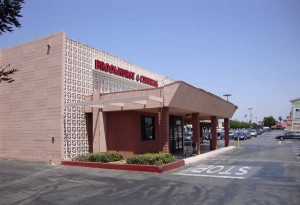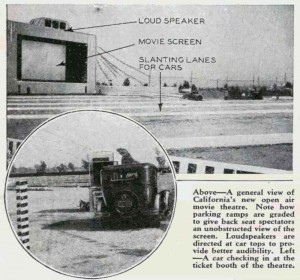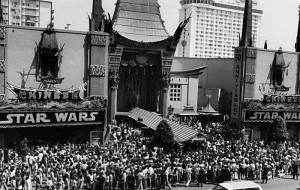Tags: 1 Comment
Remembering The Fountain Valley Drive In
October 8th, 2009 by
Respond
La Habra Drive-In Closure at 20
September 18th, 2009 by
Respond
Tags: Comments Off on La Habra Drive-In Closure at 20
Last Hurrah for the Brea Plaza
September 17th, 2009 by
Respond
Tags: 3 Comments
A Theatre of Great Contention: Foothill Ranch 22
September 16th, 2009 by
Respond
This week marks the tenth anniversary of Regal’s Foothill Ranch 22. While the theatre has never quite lived up to business expectations, the site does have a rather colorful back story.
Back in 1993, the Foothill Ranch Development Company announced plans to build a retail and entertainment center, on a fifteen acre parcel, beside the Foothill Transportation Corridor. The centerpiece of this development was to be a 24 screen, 4,000 seat cinema, run by AMC. At the time, the theatre would have been the nation’s largest and AMC’s fourth venture in to Orange County. This announcement also came on the heels of Edwards’ plans to develop an eighteen screen venue a few miles away, at what would later become the Irvine Spectrum complex.
True to form, Edwards didn’t take this encroachment on their home turf lightly. Accelerating and expanding their Irvine project, the chain opened the Spectrum theatre early (before the retail portion of the development had broken ground) and increased the cinema’s screen count to 22. Also in retaliation to AMC’s Foothill plans, Edwards took a more aggressive approach to winning bids on cinema projects, in near bye Aliso Viejo and Mission Viejo. Faced with ever stiffening competition from Edwards, AMC officially backed out of the Foothill Ranch project in the summer of 1996.
The following year, another suitor entered the Foothill Ranch Cinema project, via Knoxville, Tennessee based Regal. At the time, Regal was a newcomer to the Southern California market, having entered the area through the purchase of Krikorian Theatres’ original chain. The Foothill location, while now downsized to a 22 screen plan, was slated to be the company’s west coast flagship. However, as with AMC’s earlier effort, Edwards quickly took action to hinder the project.
Initially threatening to build it’s own theatre across the street from the Foothill Ranch Center, Edwards managed to push, then cash strapped, Regal in to a “wait and see” mode. After waiting out Edwards’ fruitless threat, Regal completed the Foothill cinema in 1999, only to consider a last minute offer, from Edwards, to purchase the venue. However, having lost the company’s patriarch in 1997 and recently entered in to a $250 million financing deal with Bank of America, Edwards was unable to pull off the deal, making way for the theatre’s long delayed opening, on September 17, 1999. None the less, Edwards did manage one parting jab, offering a week long free popcorn and fifty cent hot dog promotion at it’s locations, to coincide with the Foothill’s opening week festivities.
The ensuing years would see Edwards and Regal slip in to bankruptcy; both ultimately falling under the same ownership and Regal Entertainment Group banner. The Foothill Ranch cinema, which had been the source of so much contention, for the better part of a decade, would prove to be a disappointment, settling in to being one of the county’s under performing theatres.
Tags: 1 Comment
Adult Refreshment
September 2nd, 2009 by
Respond
One likely doesn’t think of concessions, when the, long defunct, Pussycat adult theatre chain is brought up. However, as with it’s mainstream counterparts, there were concession stands in use at Pussycat venues and they even had branded merchandise.
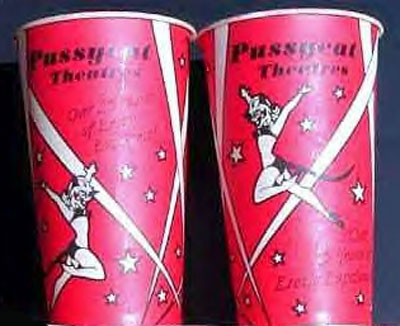
While I’m sure there was some activity at the stand, especially during the “porno chic” era, I can’t imagine there were ever issues with long concession lines.
Tags: Comments Off on Adult Refreshment
Brookhurst Re-Opening Date Set
August 25th, 2009 by
Respond
After a near two month delay, the Brookhurst Theatre has finally set a re opening date of Friday, 8/28/09.
This will mark the forty-eight year old theatre’s third reopening and fifth operator (possibly sixth). The Brookhurst had been sittng dormant for three and a half years, since the previous operator, Starplex Cinemas, closed the venue in January of 2006. As with the theatre’s last incarnation, the Brookhurst will be operated under a discount pricing model.
Tags: Comments Off on Brookhurst Re-Opening Date Set
L.A.’s Drive-In
August 19th, 2009 by
Respond
Tags: Comments Off on L.A.’s Drive-In
The Rise An Fall of Mann Theatres
August 18th, 2009 by
Respond
These days, the Mann Theatres chain exists as a mismanaged handful of leases, in search of new operators. Yet, in the not so distant past, Mann was a major player in the exhibition industry; for a time, the nation’s largest independent chain.
Tags: 4 Comments
National General’s Chinese
August 16th, 2009 by
Respond
Tags: 1 Comment
End Credits For Mann Theatres
August 11th, 2009 by
Respond
Tags: 2 Comments

